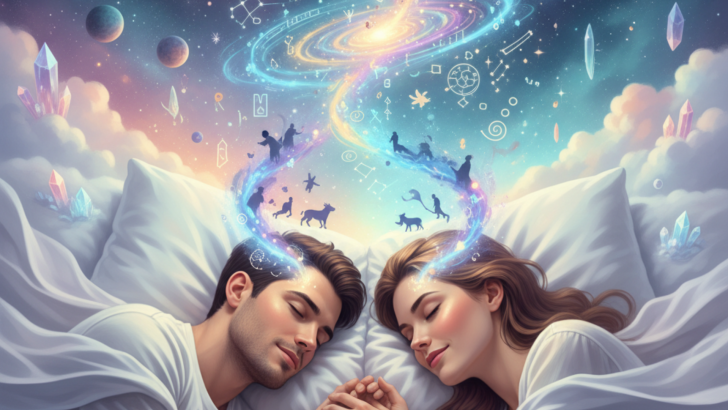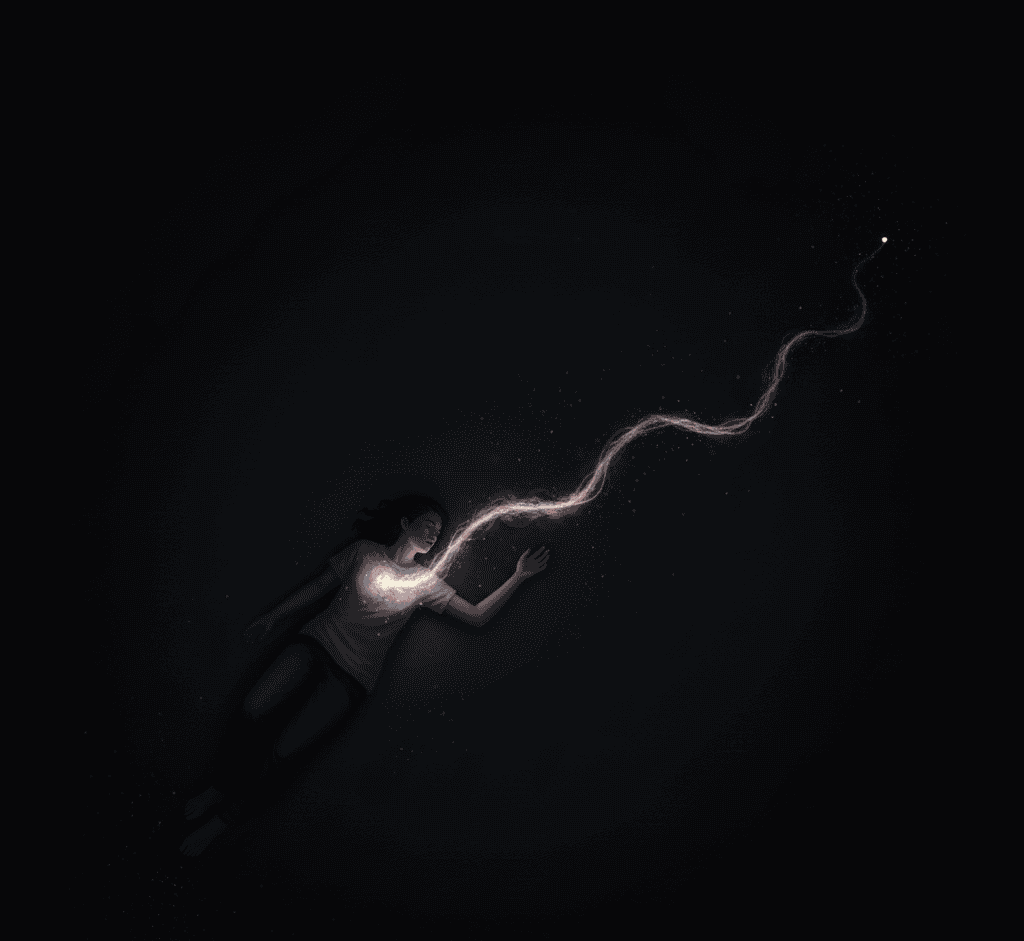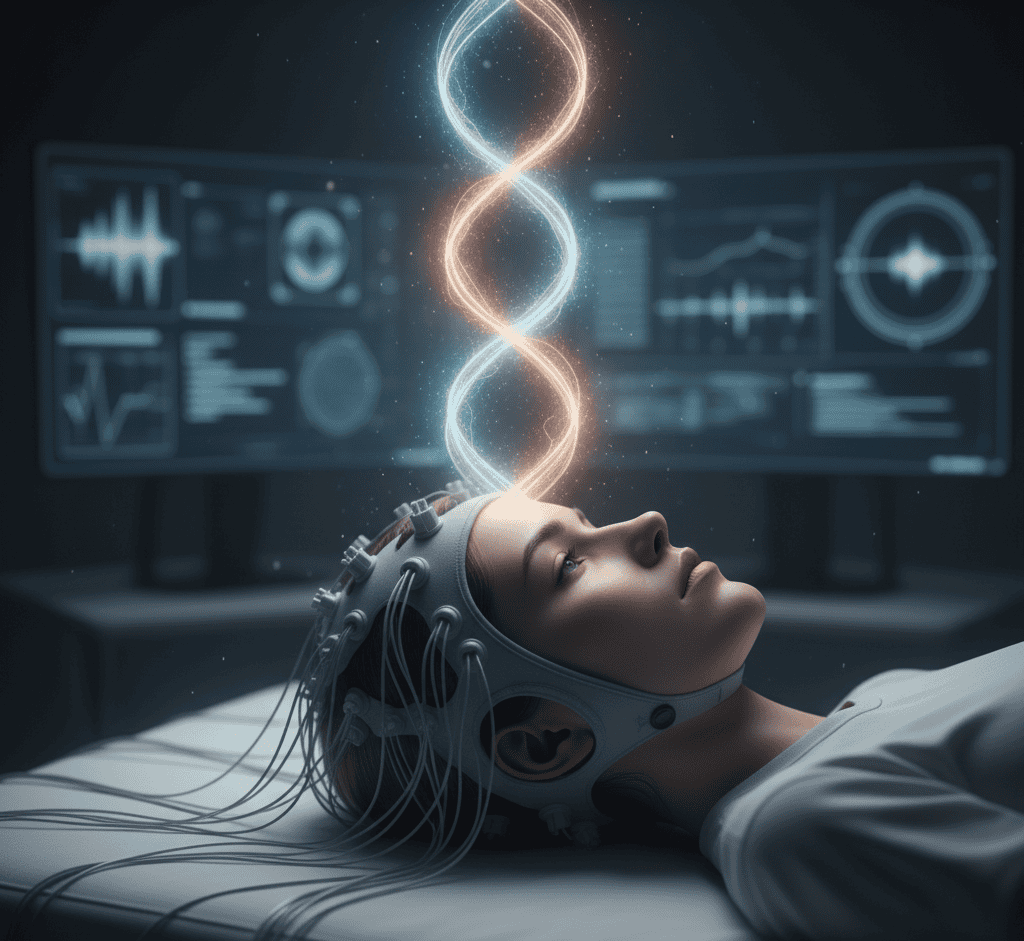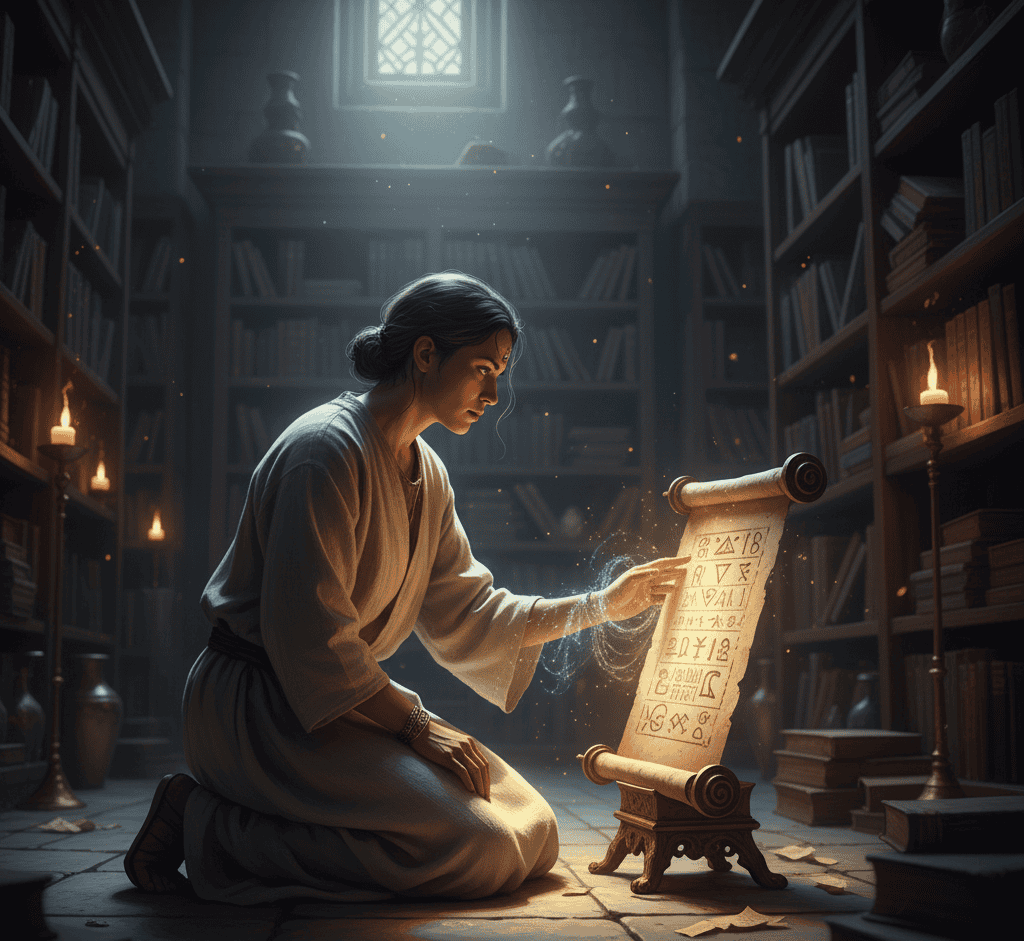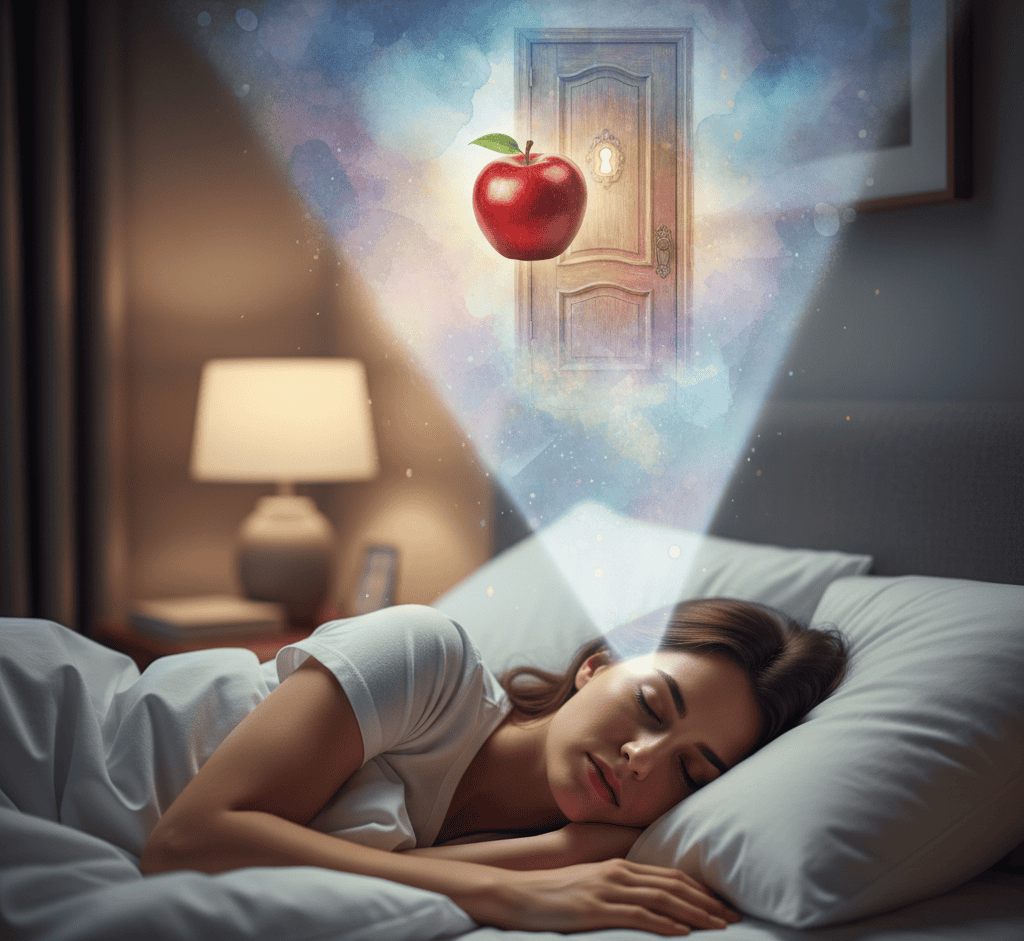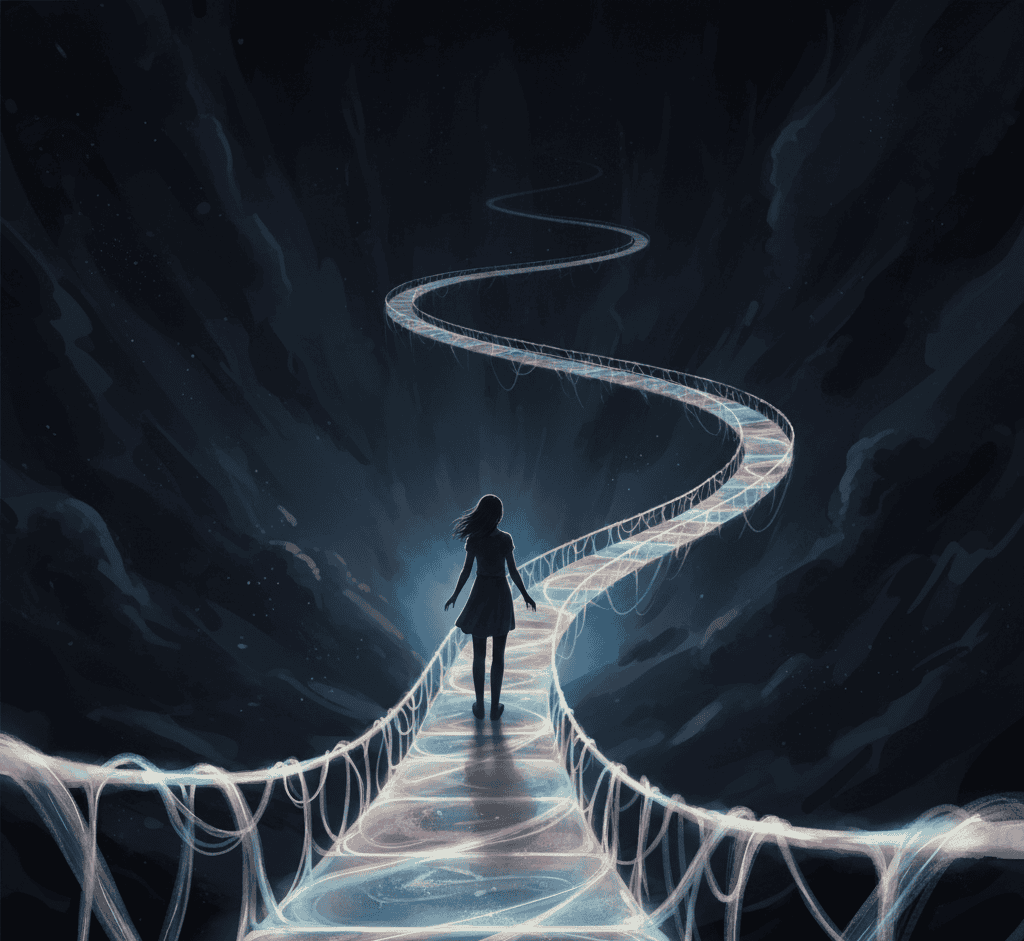Have you ever woken up from a dream and realized that someone you know had the exact same one?
It sounds like something out of a movie, yet people all over the world swear it has happened to them.
Friends, lovers, even strangers report dreaming of the same people, places, or events on the same night.
It feels impossible, yet somehow magical. Is there something deeper at play when two minds share the same dream, or is it just a strange
When Two People Dream the Same Dream
The stories about shared dreams are surprisingly common. Couples often say they dream of the same places or conversations.
Twins have reported parallel dreams for years. Even total strangers on online forums have described the same settings, like an endless shopping mall or a staircase that never ends.
There is one famous case from the 1980s when two sisters living in different cities claimed to dream of their deceased grandmother on the same night.
They both described her wearing the same outfit, sitting in the same chair, smiling at them. Neither knew until the next morning when one called the other.
The details matched perfectly. Scientists have tried to explain this through probability and memory.
The human brain stores billions of impressions every day, so sometimes two people will pull similar ones out of their subconscious.
Maybe both sisters had thought about their grandmother recently, or both saw something that reminded them of her before bed.
Our minds build dreams from these bits and pieces, so coincidences are bound to happen.
But still, some moments seem to defy the odds. How do people dream of the same event before it happens?
How do they describe details that are too specific to dismiss? Shared dreams may be rare, but they keep happening often enough to make even skeptics pause.
The Science of Dreaming Together
Science does not easily explain the mystical side of dreaming, but it does offer some ideas. When we sleep, our brains enter cycles of deep rest and rapid eye movement.
During the latter, our imagination comes alive. The emotional centers of the brain are active, while logic and self-control take a back seat.
That is why dreams can feel both real and irrational at the same time.
Some researchers suggest that shared dreams could come from shared emotional states.
When two people live closely, like partners or family members, their brains can synchronize in subtle ways.
They pick up each other’s moods, habits, and energy levels. This connection continues even while sleeping.
If both people fall asleep thinking about the same thing, their dreams may drift in similar directions.
There is also the idea of cultural dreaming. We live in the same world, absorb the same images, and worry about the same events.
When major things happen — a pandemic, a war, a celebrity death — many people report similar dreams across the world.
They are not connected physically, but emotionally and socially. It is a reminder that our collective experiences often shape what our minds replay at night.
Still, some cases challenge this logic. A few scientists studying lucid dreaming have experimented with communication between dreamers.
In one study, participants tried to meet each other inside a shared dream by focusing on the same symbols before sleep.
While results were unclear, a few claimed to have seen the same location or sign. It could be a coincidence, but it also hints at something we do not yet understand.
The Possibility of a Hidden Connection
For those who believe in energy or spirituality, shared dreams make perfect sense. If thoughts have energy, then dreaming could be another way for that energy to travel.
Some say that during sleep, our minds are free from the physical world and can connect with others on an unseen level.
Across cultures, dreams have always been more than random stories. In Native American traditions, dream sharing is sacred.
It is said that dreams can be messages from ancestors or from the collective spirit of a community.
In ancient Greece, temples dedicated to the god Asclepius invited people to sleep inside so that their dreams could reveal shared visions of healing.
Even today, some people believe shared dreams can connect lovers, family members, or souls meant to meet.
There is also a modern psychological theory called telepathic dreaming. It suggests that when two people share a deep emotional bond, their subconscious minds might communicate during sleep.
Parents sometimes report dreaming about their children in distress, only to discover the child was sick or upset at that same moment.
The link may not be measurable, but it feels real enough to those who experience it.
Skeptics argue that humans love patterns. We remember coincidences and forget the millions of dreams that do not match.
However, believers counter that not all coincidences feel the same. When two people wake up with the same story, it shakes their understanding of what the mind can do.
Maybe dreams are the meeting place of thoughts, not proof of magic, but of connection.
The Dream We All Share
Whether through science or spirit, the idea of shared dreams touches something deep in us.
It reminds us that human experience is not as isolated as it seems. Our minds are constantly searching for meaning and for one another, even in sleep.
Think about how a song gets stuck in your head because you heard it with someone you love.
The connection stays, echoing quietly. Dreams might work in a similar way.
Our brains, filled with memory, emotion, and desire, keep replaying the feelings that matter most.
When two people care for each other, maybe their dreams simply overlap where those feelings live.
There is something beautiful about imagining that our inner worlds might touch. If you and someone else share a dream, it can feel like the universe winking.
Even if science cannot prove a psychic bond, shared dreams show that our emotions reach farther than we think.
And maybe that is the real magic. Dreams are not just private stories. They are echoes of our connections, replayed in a place without walls or distance.
Whether they come from the heart or from pure chance, shared dreams are proof that the human mind, in all its mystery, still has room for wonder.
The Bridge Between Sleeping Souls
Perhaps shared dreams are not about predicting the future or reading minds but about recognizing how connected we already are.
Every bond we form leaves a trace, every emotion sends a ripple. In waking life, those ripples fade quickly, drowned out by noise.
But in dreams, when everything else quiets, those signals can find each other again.
Maybe that is why lovers in long-distance relationships dream of holding hands. Maybe that is why a mother wakes with tears after dreaming her child was calling her name.
These are not coincidences. They are emotional bridges built in sleep, proof that even in our most private moments, we are still reaching toward someone.
So the next time you dream of someone and they dream of you, do not rush to explain it away. Smile, tell the story, and enjoy the strange beauty of it.
Whether it is science, energy, or fate, it is a reminder that we all share something unseen — a quiet space where our minds still find each other in the dark.

自出生以来,我一直感觉到自己与神灵有着紧密的联系。作为一名作家和导师,我的使命是帮助他人在最黑暗的时刻找到爱、幸福和内心的力量。

